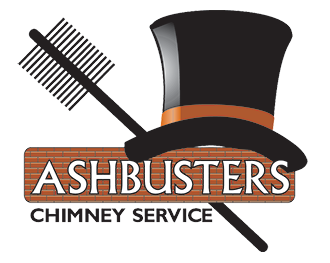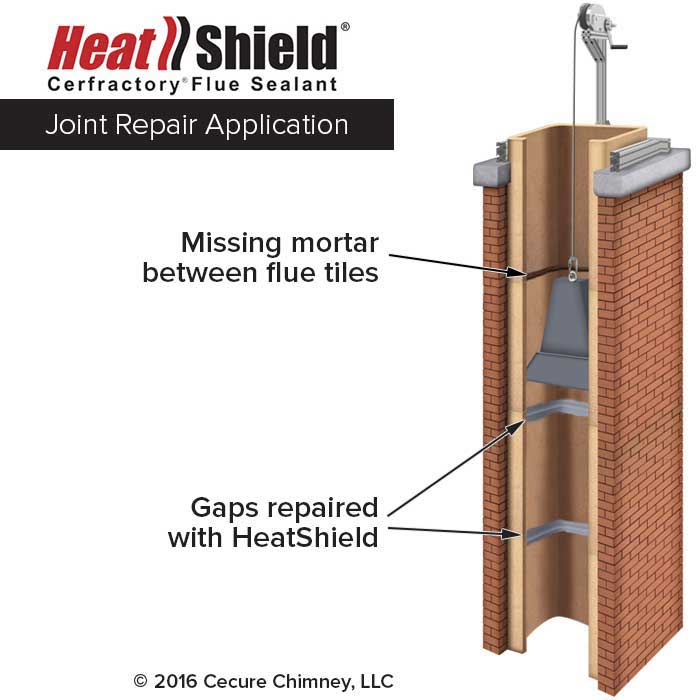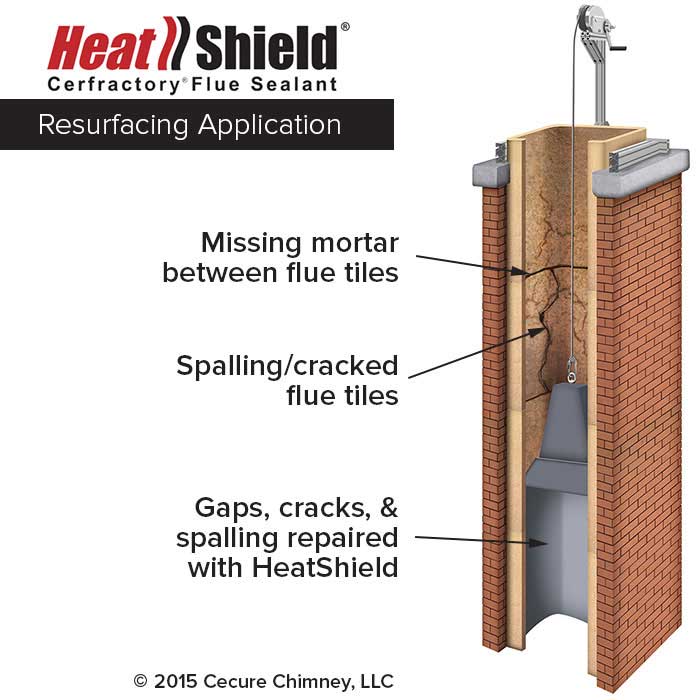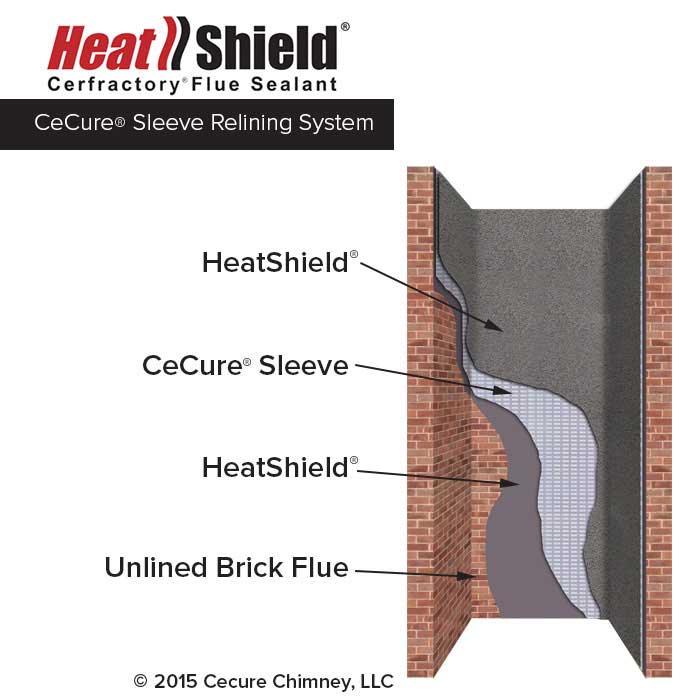Chimney Services » Chimney & Dryer Services » Chimney Repairs » Chimney Relining »
Chimney Liner Repair: The HeatShield® Relining Method
At Ashbusters Charleston, we encourage our clients to schedule a chimney inspection at least once a year to identify problems in their chimneys and nip them in the bud early. The main benefit of annual checkups is that they give us the opportunity to find issues when they’re in the beginning stages – and are, therefore, simpler to fix.
Now, more straightforward fireplace repairs are usually easier on the budget, but occasionally, an inspection will uncover a more serious issue, like a damaged chimney liner. If you have an older chimney system, you may have a clay or terracotta liner which has meant wallet-busting repairs in the past
Up until recently, there were few options for repairing a clay or terracotta chimney liner other than just replacing it with a stainless steel liner. The major reason is you couldn’t get inside the flue to even out the gaps, cracks, and flaking. But with HeatShield®, all of that has changed. You now have the option to restore your chimney’s clay flue liner instead of going through the expense of rebuilding or relining.
Before you spring for a stainless steel liner installation, call Ashbusters Charleston and ask about HeatShield®. You can schedule an appointment and one of our chimney technicians will come out and assess whether or not HeatShield® is a good option for you. Call us now at 843-595-4927 or book an appointment online.
What Is HeatShield® Chimney Relining?
Chimney liners protect your chimney from acidic gases that can damage the infrastructure and leak into your home, which poses a risk to your health. As time goes on, those acidic gases can corrode the liner leading to the formation of gaps and cracks.
Homes built before 1940 didn’t always have chimney liners, but clay and terracotta were the most popular products used for chimneys that were equipped with liners. Although clay and terracotta can withstand extreme temperatures, both materials tend to chip over time. (Quick tip: if you see bits of clay gathering in your firebox, call us as soon as possible to set up an inspection.)
HeatShield® is a heat-resistant sealant system that uses ceramic and refractory materials called “Cerfractory” to seal gaps and cracks. This creates a smooth, insulated surface that improves the chimney’s safety and efficiency. HeatShield® is a cost-effective alternative to replacing the liner altogether because you’re able to preserve the existing chimney liner and restore it to its prior level of functioning.
What Are My Options With HeatShield®?
There are three options with HeatShield® – the Joint Repair System, the Resurfacing System, and the CeCure® Sleeve Relining System. We’ll recommend one of those after we complete an inspection and have determined how much damage the liner has sustained.
- The Joint Repair System. This is the most suitable choice for liners with minimal damage. If you only have a few gaps in the mortar joints but the clay tiles are intact, we can create a foam applicator that’s been customized for your flue to carefully fill in any openings with HeatShield® Cerfractory® Flue Sealant.
- The Resurfacing System. This is a good option when the damage to the liner is more extensive and features cracking and brick spalling. It’s similar to the Joint Repair System but instead of filling in voids, we’ll cover the entire liner with a quarter-inch coat of sealant.
- The CeCure® Sleeve Relining System. If your chimney liner has significant damage or you don’t have a liner, we’ll suggest the CeCure® Sleeve Relining System. During this process, a coating of HeatShield® Cerfractory® Flue Sealant is applied to the flue walls and then the CeCure® Sleeve – a ceramic insulation sleeve reinforced with stainless steel fabric – is lowered into the flue.
All three of these methods are followed up by a video inspection to confirm that the chimney liner is completely sealed and your fireplace is safe to use again.
Chimney Relining: The First Step
So, you think your chimney liner is compromised? The first step is discovering if your chimney liner has any of the problems that allow poisonous carbon monoxide and other gases to escape into your home through the breaks and gaps in the liner. This can be determined with a level 2 inspection. This type of inspection includes running a camera up through the chimney liner, so we can closely inspect the liner walls. Through this process, we are able to see details that reveal any hidden dangers.
The great thing about HeatShield® is it restores the integrity of your chimney flue liner to vent the hazardous gases out of your home the way your chimney is supposed to do. The functionality of your fireplace is restored and you can enjoy your fireplace as usual without worrying about the dangers that have not been fixed.
We Think “Safety First”
Our number one reason for offering the HeatShield® option is for safety purposes. However, we know from experience that your chimney system is not working up to its potential when it has internal damage to the flue liner. Those small gaps and cracks allow excess air into your chimney, slow the updraft, and make it harder for smoke and gas to rise up and out. That means that the fireplace, wood stove, or furnace will perform poorly, resulting in the loss of heat efficiency until the liner is repaired or replaced.
Relining Your Chimney: What Leading Organizations Are Saying
According to the Chimney Safety Institute of America (CSIA), problems such as gaps, cracks, and spalling (flaking) in your chimney’s flue can present serious risks to your home and family, because your chimney can no longer perform its intended function which is to safely contain and vent the products of combustion to the outside of your home.
The National Fire Protection Association (NFPA) states, “If the flue liner in a chimney has softened, cracked or otherwise deteriorated so that it no longer has the ability to contain the products of combustion (i.e., heat, moisture, creosote, and flue gases), it shall be removed and replaced, repaired or relined…” NFPA 211-Standard for Chimneys, Fireplaces, Vents and Solid Fuel-Burning Appliances (2006).
We also can find written into the building codes and fire standards that chimneys should be “structurally sound, durable, smoke tight and capable of conveying flue gases to the outside completely and safely.” This is not about just new construction but any residential or commercial structure that is fitted with a fireplace, wood stove, or furnace appliance of any type.
Schedule Your Chimney Inspection
If you think your chimney is experiencing damage, start with an inspection first and find out if your liner is even something you need to worry about. Most of the time, chimneys that have been properly maintained are fine unless something unusual has happened to damage them outside of normal use.
It’s good to know that having HeatShield® as an option to restore your chimney liner gives you an inexpensive alternative to restore function for safety and efficiency. It’s also great to know that a liner can be repaired without the added hassles of rebuilding your chimney and the cost of a new liner.
If you feel this might be something you want to take a look at, please let us know. There are many families in Charleston and surrounding areas that no longer use their fireplaces because they have not had an affordable way to restore them properly. We would like to have the chance to see if this new process can restore your fireplace so you can enjoy it once again.
Trust Our Team of Experts at Ashbusters Charleston
Before you give up on your clay or terracotta chimney liner and opt for installing an expensive alternative, spare your budget and consider HeatShield® instead. Ashbusters Charleston is an authorized HeatShield® Installer and we’re ready to get your chimney back in working order. Get in touch with us online or call us at 843-595-4927. Our customer service team is on hand and here to help you get started!
Don’t wait to call us for your chimney leak repairs…taking care of this important chimney repair quickly can save on more expensive repairs down the road.



